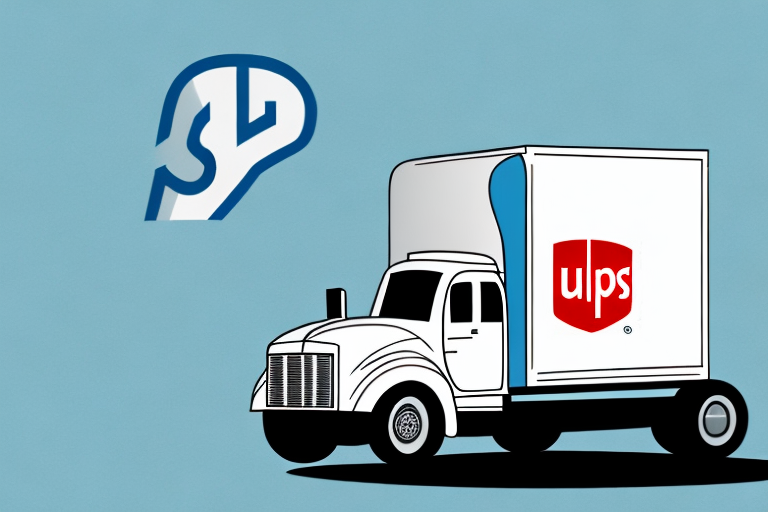Are UPS and USPS the Same?
When it comes to shipping, two major players dominate the industry: UPS and USPS. While both are prominent shipping carriers, they differ significantly in their services, pricing, and reliability. In this article, we provide an in-depth comparison of both companies to help you make informed shipping decisions.
Understanding the Basics of Shipping Services
Before delving into the specifics of UPS and USPS, it's essential to understand the fundamental differences between various shipping services. The two most common types are standard ground shipment and express shipping. Standard ground shipment is typically slower and less expensive, suitable for non-urgent deliveries, while express shipping is faster and more costly, ideal for time-sensitive shipments.
Both UPS and USPS offer standard and express shipping services. However, determining which company offers superior services and pricing depends on your specific shipping needs.
For standard ground shipments, UPS and USPS have comparable delivery times and pricing. USPS may be more advantageous for smaller packages, offering flat-rate boxes that can reduce shipping costs. On the other hand, UPS is often more suitable for larger parcels, providing a wider range of options for package size and weight.
In express shipping, UPS typically prices higher than USPS but provides more delivery time options and delivery guarantees, which could be worth the extra cost for urgent shipments.
Services Offered by UPS and USPS
One of the primary differences between UPS and USPS is the range of services each offers. UPS specializes in business-to-business (B2B) shipping, catering to larger enterprises with high-volume shipping needs, while USPS targets residential and small business shipments.
Additionally, UPS provides specialized services such as temperature-controlled shipping, hazardous materials shipping, and white-glove delivery services. These premium services come at an additional cost but are essential for certain types of shipments.
Conversely, USPS offers services like Priority Mail, which is faster than standard ground shipping yet more affordable than express options. USPS also provides flat-rate shipping options that are cost-effective for heavier parcels.
When it comes to delivery options, UPS offers various choices, including same-day delivery, next-day delivery, and two-day delivery, along with weekend and holiday delivery for an extra fee. USPS primarily delivers on weekdays, with limited options for expedited deliveries.
Furthermore, UPS boasts a more comprehensive tracking system, offering real-time updates through their website and mobile app. While USPS also provides tracking, it may not be as detailed or current.
Comparing the Pricing Models of UPS and USPS
Pricing plays a critical role in choosing between UPS and USPS. While both companies provide multiple pricing models, they differ in structure and cost-effectiveness.
UPS pricing is generally more complex, incorporating various surcharges and fees in addition to the base rate. However, UPS offers volume discounts for frequent shippers, which can significantly reduce shipping costs for businesses.
USPS has a more straightforward pricing model. Priority Mail prices depend on package weight and shipping distance, with flat-rate options available for specific box sizes. Additionally, USPS offers free Priority Mail supplies, helping to eliminate packaging costs.
When comparing UPS and USPS pricing, consider the delivery speed. UPS provides options like same-day, next-day, and two-day delivery at higher costs, whereas USPS offers Priority Mail Express for overnight delivery and Priority Mail for 1-3 day delivery at lower prices.
Moreover, UPS charges extra for services such as signature confirmation and insurance, while USPS may include similar services in certain shipping options like Priority Mail.
Tracking Options Offered by UPS and USPS
Both UPS and USPS provide online tracking options for parcels. However, UPS offers a more robust tracking system with real-time updates and customizable notifications, enhancing shipment visibility and customer experience.
USPS's tracking service is reliable but may offer less detailed or less timely information compared to UPS. While tracking is free for both services, UPS may charge additional fees for advanced features like signature confirmation or proof of delivery, whereas USPS includes these services at no additional cost.
Reliability of UPS vs USPS Deliveries
Reliability is paramount for shipping services. UPS is renowned for its high on-time delivery rates and extensive route optimization, making it a reliable choice for time-sensitive shipments. According to UPS, they achieve over 95% on-time delivery for key services.
USPS has a vast delivery network across the United States and has made significant improvements in delivery times over the past years. Data from the USPS Performance Standards show competitive delivery reliability metrics.
The reliability of each service may vary depending on the specific shipment and destination. Both companies offer tracking services that allow customers to monitor delivery progress and receive notifications about delays.
Additionally, both UPS and USPS provide insurance options for valuable or fragile items, ensuring added protection and peace of mind for customers.
Cost is another factor impacting reliability perceptions. While UPS may be pricier, it often delivers faster and more reliably. USPS, being more economical, is ideal for smaller or less urgent shipments.
Limitations of UPS and USPS Services
Despite their extensive services, both UPS and USPS have limitations. For instance, UPS may not serve certain remote or hard-to-reach areas, restricting delivery options for some customers. USPS has restrictions on package size and weight, which can limit shipping options for larger or heavier items.
Shipment delivery times can also be affected by external factors such as weather conditions, holidays, or unforeseen circumstances, potentially causing delays for both UPS and USPS shipments.
Cost considerations are vital, as the expense can vary based on package size, weight, and destination. It's crucial to compare prices thoroughly to select the most cost-effective option that meets your shipping needs.
Pros and Cons of Using UPS vs USPS
To facilitate comparison between UPS and USPS, consider the following pros and cons:
- UPS Pros: Extensive availability, specialized shipping options, superior tracking capabilities
- UPS Cons: Higher costs, complex pricing structure, limited delivery to remote areas
- USPS Pros: More affordable, flat-rate shipping options, free shipping supplies
- USPS Cons: Limited tracking detail, slower delivery times, restrictions on package size and weight
For international shipping, UPS often is the better option due to its larger global network and expedited shipping options. However, for domestic shipping within the United States, USPS may be preferable due to a wider range of delivery choices, including weekend deliveries.
Moreover, UPS is recognized for excellent customer service, with dedicated representatives available to handle issues. USPS, on the other hand, has faced criticism for customer service challenges, including long wait times and difficulty accessing support.
Choosing Between UPS and USPS for Your Next Shipment
Deciding between UPS and USPS depends on your unique shipping requirements and priorities. If you're shipping time-sensitive or specialized items, UPS may be the optimal choice. If affordability and reliability for smaller packages are your priorities, USPS could be more suitable.
Consider each company's services, pricing models, and any restrictions or limitations that might impact your shipment. Additionally, the destination plays a role; UPS has a more extensive global network, making it suitable for international shipments, whereas USPS is robust for domestic distribution across the U.S.
Customer service level is another critical factor. UPS is known for its responsive and reliable customer support, while USPS has a mixed reputation in this area.
Tips for Saving Money on Shipping Costs with UPS or USPS
Regardless of which shipping company you select, there are strategies to reduce shipping expenditures. Consider the following tips:
- Compare Rates: Utilize shipping rate comparison tools to identify the best deal between UPS and USPS.
- Volume Discounts: Take advantage of volume discounts or special pricing options if you're a frequent shipper.
- Flat-Rate Shipping: Utilize flat-rate shipping options, which can be more cost-effective for heavier items.
- Free Supplies: Use free shipping supplies provided by USPS to lower packaging costs.
- Avoid Surcharges: Carefully review shipping options and restrictions to avoid unnecessary surcharges and fees.
Additionally, leveraging online shipping calculators can help estimate shipping costs before dispatching your package, enabling rate comparison and selection of the most affordable option. Consolidating multiple packages into a single shipment can also result in cost savings, especially for recurring shipments to the same location. Implementing these strategies can significantly reduce your shipping expenses, keeping more funds available for other business or personal needs.
By thoughtfully evaluating the services and options provided by UPS and USPS, and applying cost-saving tactics, you can optimize your shipping strategy effectively.




















